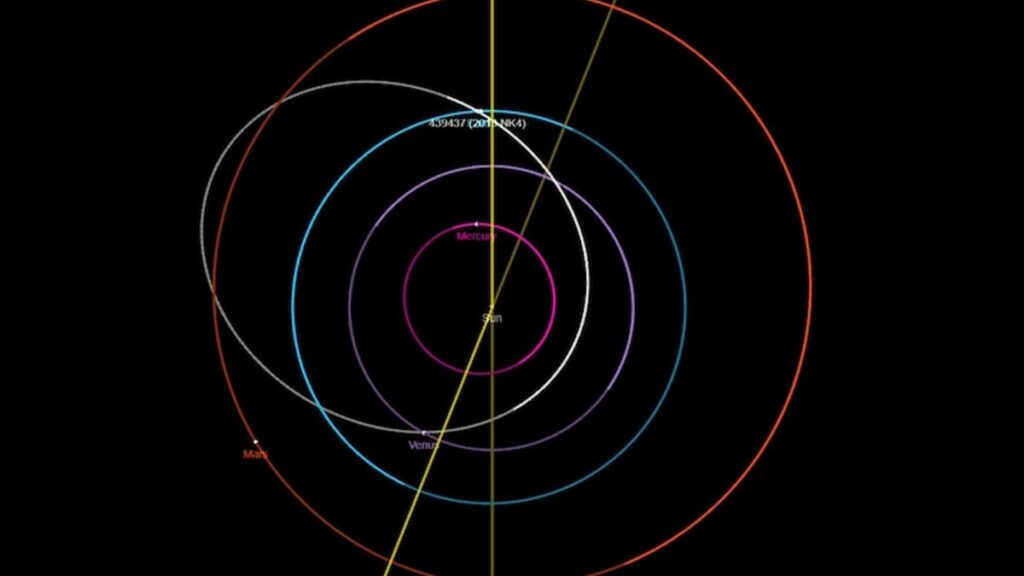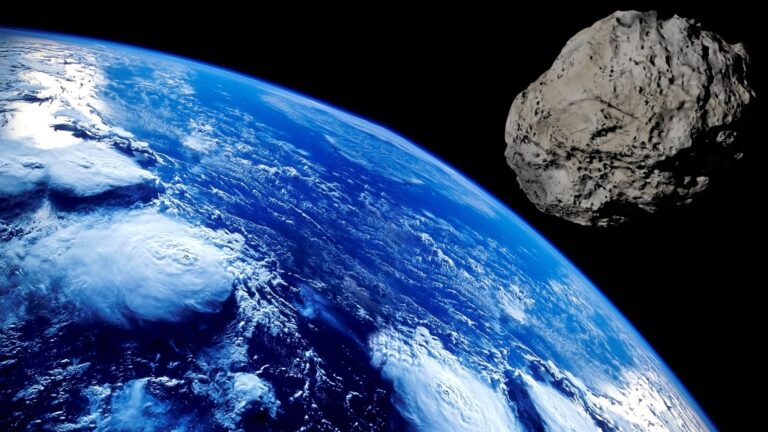An asteroid, classified as ‘potentially hazardous’ and measuring 2,000 feet wide, has recently passed by Earth at its closest distance. It is visible through a telescope.
The colossal asteroid 2013 NK4, spanning 2,000 feet in width, has recently completed its closest encounter with Earth ever documented, passing by at a distance approximately eight times that between our planet and the moon. Even now, you have the opportunity to observe this immense celestial body using a telescope in your own backyard.
The colossal asteroid, known as 2013 NK4, recently completed its closest pass by Earth since records began, safely gliding past our planet at a distance more than eight times the average gap between Earth and the moon. Despite being labeled as “potentially hazardous,” this massive space rock does not pose any danger to Earth. For the very first time, amateur astronomers will have the opportunity to observe it through telescopes over the next three nights (April 15 – April 17).
2013 NK4 measures approximately 2,000 feet (610 meters) in width, making it twice the size of the infamous “god of chaos” asteroid Apophis, which is set to have an extremely close encounter with Earth in 2029, as reported by EarthSky.
The asteroid reached its closest point to Earth at 10:50 a.m. EDT on Monday (April 15), coming within about 2 million miles (3.2 million kilometers) of our planet, while traveling at a speed of approximately 37,000 mph (59,000 km/h), according to NASA’s Jet Propulsion Laboratory (JPL).
Although this asteroid has the potential to cause significant damage if it were to collide with Earth, NASA’s calculations indicate that it is highly unlikely to impact our planet. Nevertheless, due to its size and proximity, it is classified as a potentially hazardous asteroid.
Despite the lack of threat posed by this asteroid, astronomers are closely monitoring its close approach using radio telescopes. They aim to capture specialized radar images, known as delay-Doppler images, in order to gain more insight into the asteroid’s dimensions and characteristics.

You don’t need to possess expertise in astronomy to catch a glimpse of this celestial object. From now until April 17, the asteroid will be observable to anyone equipped with a good-quality telescope for stargazing. Nevertheless, EarthSky suggests that the asteroid will be most prominently visible on April 16 and April 17 due to its positioning in relation to Earth. To determine its location in the sky, you can utilize TheSkyLive.com.
Since its discovery in 2013, the asteroid 2013 NK4 has completed 11 orbits around the sun, with each orbit taking approximately 378 days, as reported by EarthSky.com. The JPL Small-Body Database indicates that the asteroid will have another distant flyby on April 23, 2025. Despite its numerous close approaches to Earth, 2013 NK4 has never been visible through a backyard telescope.
Recent simulations of the asteroid’s path have revealed that this upcoming flyby will be the closest in over a century, dating back to at least 1900. However, projections also show that 2013 NK4 will come even closer to Earth in 2055, reaching a minimum distance of about 1.3 million miles (2.1 million km) from our planet – less than six times the average Earth-moon distance.
If you wish to catch a glimpse of this massive space rock, be sure to step outside in the coming nights. Keep your fingers crossed for clear skies, as this will be your last opportunity to observe 2013 NK4 for over three decades.
Do not forget to share your opinion with us to provide you with the best posts !




0 Comments